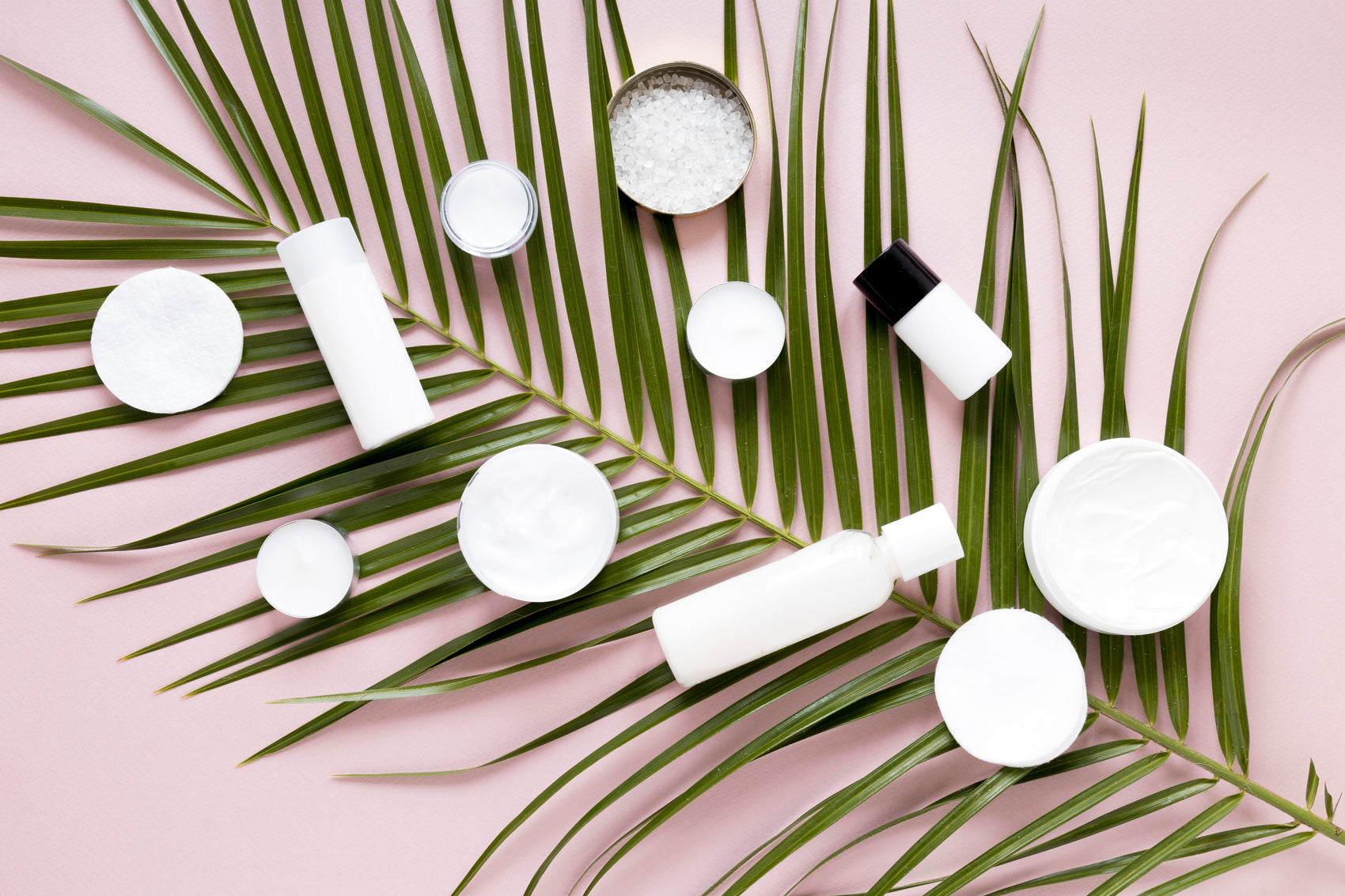Table of Contents
Introduction
Have you ever wondered how some people seem to have that enviable, dewy glow while others struggle with dryness and dullness? The secret often lies in the ingredients used in their skincare routines. One such ingredient that has garnered attention in recent years is lactic acid. As a member of the alpha-hydroxy acid (AHA) family, lactic acid is primarily known for its exfoliating properties. However, it also plays a significant role in hydration, making it a dual-action skincare hero.
We understand that navigating the world of skincare ingredients can be confusing, especially when it comes to determining which ones truly benefit your skin. In this blog post, we'll explore lactic acid in depth, focusing on its hydrating properties, how it works, and how to incorporate it into your routine safely. Together, we’ll unpack the science behind lactic acid and how it can transform your skin, making it smoother, brighter, and more hydrated.
Our mission at Moon and Skin is to provide clean, thoughtful skincare for every phase of life. We believe that understanding your skin and the ingredients that nourish it is essential for achieving your skincare goals. So, let’s dive into the world of lactic acid and uncover its benefits!
What is Lactic Acid?
Lactic acid is an organic compound that naturally occurs in milk—hence its historical use in beauty treatments, dating back to ancient civilizations like Egypt. Cleopatra famously bathed in sour milk to maintain her youthful complexion. Today, lactic acid is synthetically produced for use in various skincare products, making it widely accessible.
As an alpha-hydroxy acid, lactic acid is water-soluble and is known for its ability to exfoliate the skin gently. It works by breaking down the bonds that hold dead skin cells together, allowing for easier removal. This exfoliating action reveals fresher, younger-looking skin beneath. However, what sets lactic acid apart from other AHAs is its unique hydrating capabilities.
Lactic acid is a key component of the skin's natural moisturizing factor (NMF), which is crucial for maintaining skin hydration. When applied topically, lactic acid not only exfoliates but also helps the skin retain moisture, making it an excellent choice for those dealing with dryness or rough texture.
How Does Lactic Acid Work?
Lactic acid operates through a process called keratolysis, which involves the breakdown of keratin in the skin. By loosening the bond between dead skin cells, lactic acid promotes the shedding of these cells, paving the way for new, healthy cells to surface. This process not only helps to improve skin texture but also enhances overall radiance.
Exfoliation and Hydration
While many exfoliating acids can leave the skin feeling tight and dry, lactic acid is different. Its molecular structure allows it to provide hydration while it exfoliates. The gentle nature of lactic acid makes it suitable for all skin types, even sensitive skin, which is why it’s often included in formulations designed specifically for delicate complexions.
By acting on the outer layer of the skin, lactic acid encourages the production of ceramides, lipids that help form the skin's protective barrier, trapping moisture and preventing transepidermal water loss (TEWL). This means that not only does lactic acid help remove dead skin cells, but it also actively contributes to keeping the skin hydrated.
Benefits of Lactic Acid
- Gentle Exfoliation: Lactic acid is one of the gentlest AHAs, making it suitable for sensitive skin. It can effectively remove dead skin cells without causing irritation.
- Hydration Boost: As a component of the skin's NMF, lactic acid helps retain moisture, making it ideal for those with dry or dehydrated skin.
- Improved Skin Texture: Regular use of lactic acid can lead to smoother, softer skin by diminishing rough patches and uneven texture.
- Brightening Effect: Lactic acid helps fade hyperpigmentation and dark spots, giving the skin a more even tone and radiance.
- Acne Management: Lactic acid’s exfoliating properties can help prevent clogged pores, making it beneficial for those dealing with acne.
- Anti-Aging Benefits: By promoting cell turnover and improving skin hydration, lactic acid can help reduce the appearance of fine lines and wrinkles.
Summary of Key Takeaways
- Lactic acid is a gentle exfoliant that hydrates while it works.
- It supports the skin's natural moisture-retaining capabilities.
- Regular use can significantly improve skin texture and tone.
How to Incorporate Lactic Acid into Your Skincare Routine
Integrating lactic acid into your skincare routine can be a game changer. However, it’s important to do so thoughtfully to avoid irritation and maximize benefits. Here’s a step-by-step guide on how to safely incorporate lactic acid into your regimen.
Step 1: Start Slowly
If you're new to lactic acid or AHAs in general, begin by using a product with a lower concentration (around 5%) a few times a week. This allows your skin to adjust to the ingredient without overwhelming it.
Step 2: Cleanse and Tone
Always start with a clean face. Use a gentle cleanser like our Superfood Cleanser to remove any makeup, dirt, and impurities. Follow up with a toner if you typically use one, as it can help prep your skin for better absorption of subsequent products.
Step 3: Apply Lactic Acid
Apply a lactic acid serum or treatment directly to your skin. You can opt for our Liposomal Retinol Serum that combines retinol with lactic acid for added benefits. Remember to follow the product's instructions for application frequency.
Step 4: Moisturize
After allowing the lactic acid to absorb, follow with a hydrating moisturizer. Our Hyaluronic Brightening Moisturizer is an excellent choice, as it offers additional hydration and brightening effects.
Step 5: Sun Protection
Lactic acid can increase your skin's sensitivity to the sun, so it’s crucial to apply broad-spectrum sunscreen during the day. We recommend using a sunscreen with at least SPF 30 and reapplying it every two hours when exposed to sunlight.
Summary of Key Takeaways
- Begin with a lower concentration of lactic acid and increase gradually.
- Always cleanse your skin before application.
- Follow with a suitable moisturizer and sunscreen during the day.
Common Questions About Lactic Acid
Is Lactic Acid Safe for Sensitive Skin?
Yes! Lactic acid is one of the gentlest AHAs and is often recommended for sensitive skin. However, it’s still essential to patch test any new products and start with a lower concentration.
Can I Use Lactic Acid Every Day?
Most people can use lactic acid daily, but it depends on the concentration and your skin’s tolerance. If you experience any irritation, reduce the frequency of use.
Can Lactic Acid Be Used with Other Ingredients?
Lactic acid can be combined with other skincare ingredients, but it’s best to avoid using it simultaneously with strong actives like retinoids. Instead, alternate their use to minimize irritation.
Does Lactic Acid Help with Acne?
Yes! Lactic acid can help prevent clogged pores and improve skin texture, making it beneficial for acne-prone skin. Its exfoliating properties can also help reduce the appearance of post-acne marks.
What Should I Look for in a Lactic Acid Product?
When choosing a lactic acid product, look for a concentration of 5-12% for at-home use. Ensure it has a pH of 3.5 or higher to minimize irritation. Additionally, consider products that include hydrating ingredients like hyaluronic acid or ceramides.
Summary of Key Takeaways
- Lactic acid is safe for sensitive skin and can be used daily depending on concentration.
- It can be beneficial for acne-prone skin and should be paired with hydrating ingredients for best results.
- Always patch test new products to assess your skin's reaction.
Conclusion
Lactic acid is a powerful ingredient that offers both exfoliating and hydrating benefits, making it a valuable addition to any skincare routine. By understanding how it works and how to use it effectively, you can transform your skin’s texture and appearance.
At Moon and Skin, we believe in providing clean, thoughtful skincare products that empower you to make informed choices. Our Bundle & Save collection is an excellent way to build a full skincare routine, featuring our core products that work harmoniously together to support your skin’s health.
As you embark on your journey with lactic acid, remember to listen to your skin and adjust your routine as needed. Together, we can celebrate your skin through all its phases, ensuring it remains vibrant and nourished.
FAQ
1. What is the best way to use lactic acid in my skincare routine? Start with a gentle cleanser, apply lactic acid, and follow up with a hydrating moisturizer and sunscreen during the day.
2. Is lactic acid suitable for all skin types? Yes, lactic acid is gentle enough for most skin types, including sensitive skin.
3. How long does it take to see results from using lactic acid? Results can vary depending on your skin type and the product used, but many users notice improvements in texture and hydration within a few weeks.
4. Can I use lactic acid with other active ingredients? Lactic acid can be combined with other ingredients, but avoid using it simultaneously with strong actives like retinol to minimize irritation.
5. Should I wear sunscreen when using lactic acid? Absolutely! Lactic acid can increase sun sensitivity, so it’s crucial to apply broad-spectrum sunscreen during the day.







